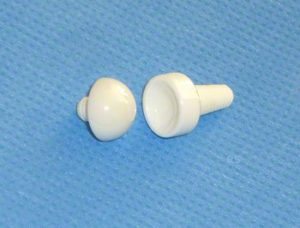Nerve transection in rhizarthrosis
If the rhizarthrosis is not yet too advanced radiographically, it is possible to block the pain transmission by destroying the pain-transmitting nerve fibers.
We can perform the operation in our Düsseldorf clinic under local anesthesia. Before such an operation, the relevant nerves are blocked with an anesthetic. The operation only makes sense if this is successful.
Unfortunately, the effect of this procedure is not permanent. The symptoms of rhizarthrosis can recur after around 4 years because the pain transmission is taken over by other nerve fibers. However, this procedure is a good alternative for rhizarthrosis patients with many secondary conditions and who are afraid of joint replacement.
Joint replacement
Here, hand surgeons differentiate between an operation with and without foreign material. One of the most frequently performed procedures is resection arthroplasty (see joint replacement with autologous tissue), in which the joint is rebuilt using the patient’s own tissue.
Other procedures include the insertion of artificial saddle joint prostheses or a silicone spacer.
With regard to the results of joint replacement using saddle joint prostheses (still in the experimental phase), no decisive advantages have yet been demonstrated in comparison with arthroplasty.
Most hand surgeons therefore recommend resection arthroplasty for rhizarthrosis. resection arthroplasty.
In the case of silicone spacers, implant wear or implant breakage have led to the indication for this joint replacement being given with caution. These silicone spacers can also slip (no stabilization as with resection arthroplasty) or lead to mucosal irritation/inflammation (= synovitis), see literature source 2.


